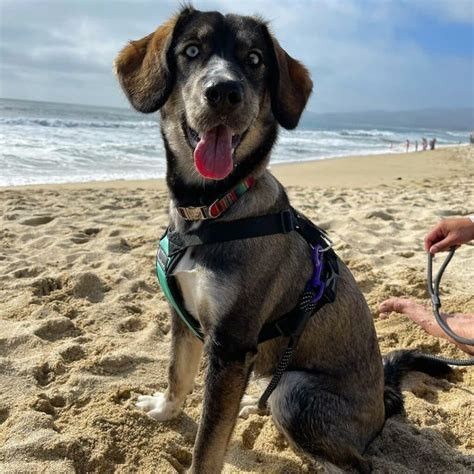Discover why your dog dumps food from her bowl and learn effective solutions to address this behavior, from a pet owner's personal experience to expert advice.
As I watched my beloved husky-Cocker Spaniel mix, Luna, approach her food bowl one evening, I couldn't help but chuckle at the familiar routine that was about to unfold. With a graceful swoop of her paw, she expertly tipped her bowl, scattering a portion of her kibble across the floor. Only then did she settle down to eat the remainder from her bowl, leaving me to wonder, yet again, about this peculiar dining habit.
The Canine Food Shuffle: More Than Just Messy Eating
At first, I found Luna's mealtime antics amusing, if a bit frustrating. But as the behavior persisted, I began to ponder the reasons behind it. Was this just a quirky habit, or was there something more to her food-scattering ritual?
In my opinion, Luna's behavior is a fascinating blend of instinct and personality. While it can be messy and inconvenient, I've come to see it as a unique expression of her canine nature. However, as a responsible pet owner, I knew it was important to understand the root causes and find ways to manage this behavior effectively.

Unraveling the Mystery: Why Dogs Dump Their Food
To better understand Luna's behavior, I delved into research and consulted with experts. Here's what I discovered about why dogs might engage in this food-dumping behavior:
-
Instinctual Behavior: Many experts believe that this behavior is rooted in ancestral instincts. Wild canines often move food away from the main site to eat in a safer location, avoiding competition or threats.
-
Bowl Aversion: Some dogs may not like certain aspects of their bowl, such as the material or scent. Metal bowls, for instance, can make noise when tags hit them, which some dogs find unpleasant.
-
Portion Size Issues: If a dog consistently leaves food on the floor, it might indicate that the portions are too large, and the dog is simply full.
-
Environmental Factors: Dogs sometimes prefer eating in a more private or quieter environment. A busy or noisy feeding area might prompt them to seek a more comfortable spot.
-
Health Concerns: In some cases, sudden changes in eating behavior can be indicative of health problems, such as dental issues or other medical conditions that make eating uncomfortable.
Practical Solutions for the Food-Dumping Dilemma
After understanding the potential reasons behind Luna's behavior, I set out to find practical solutions. Here are some strategies that have proven effective:
1. Bowl Makeover
Try different bowl types: Experiment with various materials like ceramic or plastic to see if it reduces the behavior. Consider using a heavier or non-skid bowl to prevent tipping.
2. Location, Location, Location
Adjust the feeding area: Move the feeding spot to a quieter part of the house where your dog feels more secure and less distracted.
3. Portion Control
Offer smaller amounts: Try reducing the portion size slightly to see if your dog is simply being overfed.
4. Separate Dining Experiences
Feed pets separately: If you have multiple pets, consider feeding them in different areas to reduce competition and stress during mealtime.
5. Health Check
Consult a veterinarian: If you suspect health issues might be causing the behavior, it's always best to consult with a professional to rule out any medical causes.
The American Kennel Club Weighs In
The American Kennel Club (AKC), a renowned authority on dog breeds and behavior, offers valuable insights into canine eating habits. According to the AKC, while some food-related behaviors can be normal, persistent issues with eating might warrant attention.
The AKC emphasizes the importance of establishing consistent feeding routines and monitoring any changes in eating behavior. They suggest that sudden changes in eating habits, including food dumping or reluctance to eat, could be signs of underlying health issues and should be discussed with a veterinarian.
My Journey with Luna: Lessons Learned
As I implemented these strategies with Luna, I noticed gradual improvements in her mealtime behavior. The most effective change for us was switching to a heavier ceramic bowl and moving her feeding area to a quieter corner of the kitchen.
However, the journey wasn't without its challenges. It took patience and consistency to see results, and there were days when I felt like we were back at square one. But each small victory – a meal eaten without spills, or Luna approaching her bowl with enthusiasm – made the effort worthwhile.
Conclusion: Embracing the Quirks of Our Canine Companions
Looking back at that first evening when I noticed Luna's food-dumping habit, I'm amazed at how much I've learned about canine behavior. What started as a simple quirk led me on a journey of discovery about my beloved pet's instincts, needs, and unique personality.
While Luna still occasionally plays with her food, our mealtime routine has become much smoother. More importantly, this experience has deepened my understanding and appreciation of her canine nature. It's a reminder that our pets, with all their quirks and habits, offer us daily opportunities to learn, grow, and strengthen our bonds with them.
So, if you find yourself puzzled by your dog's mealtime antics, remember Luna's story. With a bit of patience, understanding, and the right approach, you can turn those messy moments into opportunities for connection and growth. After all, isn't that what pet ownership is all about?
